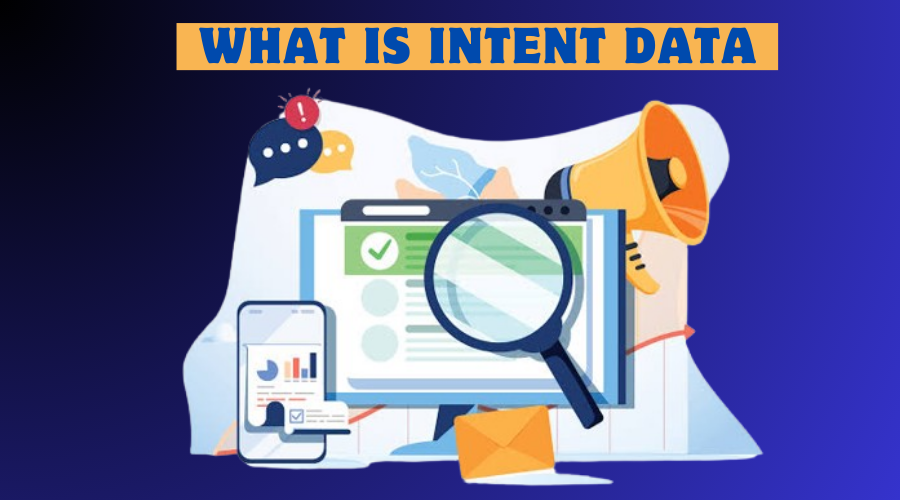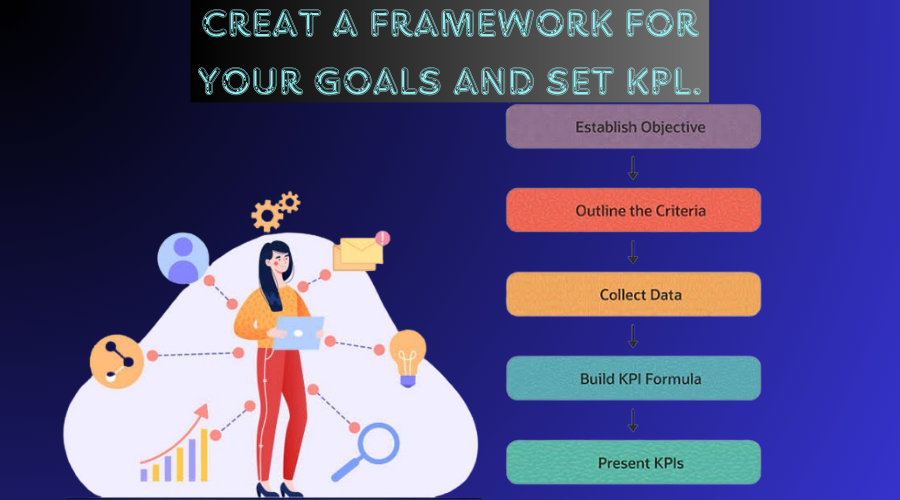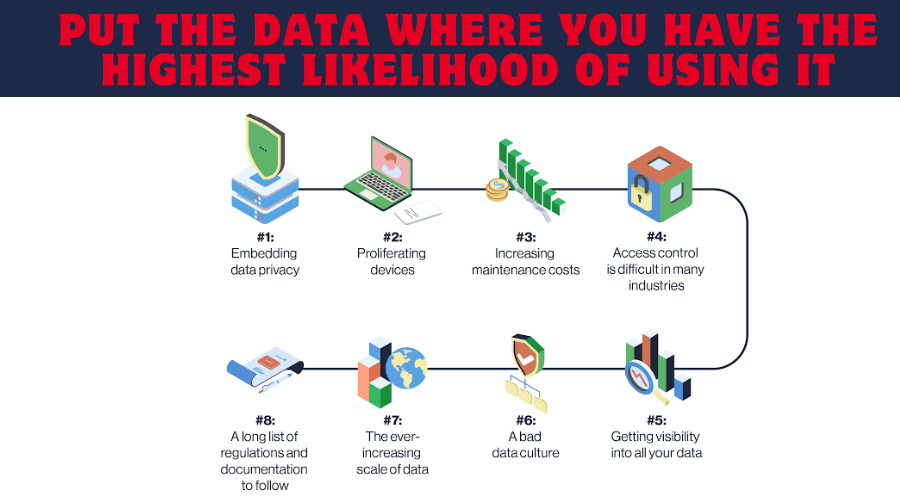Introduction
In the dynamic landscape of digital marketing, businesses are continually searching for innovative ways to gain a competitive edge. One such powerful tool that has emerged in recent years is intent data. Understanding and utilizing intent data effectively can transform the way businesses approach their marketing strategies, leading to enhanced customer engagement and improved conversion rates.
In the realm of B2B organizations, harnessing intent data has become a cornerstone for optimizing go-to-market strategies. However, the journey of intent adoption comes with its set of challenges, often leading to breakpoints that hinder success. To navigate these challenges effectively, we’ve uncovered nine secrets, building upon the initial four, drawing insights from TechTarget’s Codie award-winning Customer Success team.
What is Intent Data?


Intent data is a goldmine of information that reveals the online behavior and preferences of potential customers. This data can be broadly categorized into first-party, third-party, and behavioral intent data. First-party data originates from interactions on a company’s website, third-party data is sourced externally, and behavioral data captures user actions across the web.
The Benefits of Using Intent Data


Improving Lead Generation
One of the primary advantages of harnessing intent data is its ability to revolutionize lead generation. By understanding what users are actively searching for, businesses can tailor their approach and target prospects who are more likely to convert.
Enhancing Customer Segmentation
Intent data allows for more precise customer segmentation, enabling businesses to create targeted marketing campaigns. By categorizing potential customers based on their interests and online behavior, companies can deliver personalized content that resonates with their audience.
Personalizing Marketing Strategies
Personalization is key in today’s competitive market. Intent data empowers businesses to create personalized marketing strategies, ensuring that the right message reaches the right audience at the right time.
1. Create a framework for your goals and set KPIs.


Setting clear Key Performance Indicators (KPIs) and establishing a robust framework are fundamental to intent data program success. This ensures organizations can track progress, measure success, and hit key milestones. Key stakeholders must have a clear understanding of what intent data is and what “good” intent data means for the organization before setting specific goals.
Key Milestones for Intent Data Adoption
| Milestone | Description |
|---|---|
| Improved open/click-through rates | Measure engagement with intent-driven content |
| Volume of engaged accounts/leads | Track the growth in the number of engaged leads |
| Contacts supplied from ABM accounts | Assess the effectiveness of intent data in Account-Based Marketing |
2. Put the Data Where You Have the Highest Likelihood of Using It


Realizing the impact of intent data depends on active integration into daily activities. Ensure accessibility and actionability by evaluating your technical stack. Successful cases show that flowing intent data through standard reporting systems like Salesforce or Marketo facilitates ongoing performance tracking.
- Evaluate current data storage systems for optimal use.
- Integrate intent data into standard reporting systems.
- Use automated alerts to ensure real-time utilization by sales teams.
3. Ensure Stakeholder Alignment on the Strategy
Alignment among stakeholders is critical for successful intent data implementation. Gather key team members to discuss use cases, goals, and rollout plans. Educate teams on how intent data works and its specific benefits for their challenges. Adopting a “crawl, walk, run” approach ensures a gradual and successful implementation.
Stakeholder alignment is key to avoid confusion and slowdowns. Regular meetings and updates help maintain alignment and prevent common challenges that can impede adoption across functions.
4. Optimize and Adjust Your Strategy as You Go
Continuous evaluation is essential as businesses evolve. Reassess what constitutes success and how it is measured, especially in evaluating the performance of your intent data program. Regularly ask questions about the effectiveness of your strategy and identify areas for adjustment.
5. Develop a Comprehensive Training Program
Understanding and utilizing intent data require a well-informed team. Implementing a comprehensive training program ensures that all team members, from marketing to sales, are well-versed in the intricacies of intent data.
- Educate teams on interpreting data and identifying strong buyer intent signals.
- Integrate training into daily workflows for seamless adoption.
6. Embrace Continuous Learning and Adaptation
Intent data landscapes are continually evolving. Embrace a culture of continuous learning and adaptation within your organization. Encourage your teams to stay updated on the latest trends, technologies, and best practices related to intent data.
Creating a dynamic environment where teams are equipped to adapt to changes and leverage new opportunities in the intent data space is crucial for long-term success.
7. Implement Cross-Functional Collaboration
Breaking down silos between departments is essential for a holistic intent data adoption strategy. Foster cross-functional collaboration among marketing, sales, operations, and product teams.
Cross-Functional Collaboration Guidelines
| Team | Role in Intent Data Adoption |
|---|---|
| Marketing | Drive implementation through targeted campaigns |
| Sales | Prioritize accounts based on intent signals |
| Operations | Ensure smooth integration with existing systems |
| Product | Leverage intent insights for product development |
8. Leverage Data Visualization Tools
Make data more accessible and actionable by incorporating data visualization tools into your intent data strategy. Visualization tools provide a clear and concise way to interpret complex data sets.
- Create dashboards for real-time performance tracking.
- Visualize trends over time for actionable insights.
9. Prioritize Data Security and Compliance
As organizations harness the power of intent data, it’s crucial to prioritize data security and compliance. Implement robust measures to ensure the protection of sensitive information and compliance with data privacy regulations.
Prioritizing data security not only safeguards your organization but also builds trust with customers, fostering long-term relationships.
10. Transform Data into Actionable Insights
Intent data is a treasure trove of information, but its true potential is realized when transformed into actionable insights. To achieve this, organizations must go beyond collecting raw data and focus on deriving meaningful, strategic insights that drive decision-making.
Steps to Transform Intent Data into Actionable Insights:
- Data Segmentation:
- Categorize intent data based on various criteria such as industry, geography, and behavior.
- Identify patterns and trends within each segment to tailor your approach.
- Behavioral Analysis:
- Conduct in-depth analysis of online behaviors captured by intent data.
- Pinpoint specific actions that indicate a high level of interest in your product or service.
- Predictive Modeling:
- Leverage predictive analytics to forecast future behaviors and preferences.
- Develop targeted strategies based on these predictions to stay ahead of market trends.
- Integration with CRM Systems:
- Ensure seamless integration of intent data insights into Customer Relationship Management (CRM) systems.
- Empower sales teams with a comprehensive view of prospect engagement and intent signals.
Case Studies: Success Stories in Intent Data Implementation
Let’s explore real-world examples of businesses that have successfully harnessed intent data to drive their marketing strategies.
- Company A: Revolutionizing Email Marketing
- By analyzing intent data, Company A increased email open rates by 30%, delivering personalized content based on user preferences.
- Company B: Targeted Social Media Campaigns
- Leveraging third-party intent data, Company B created targeted social media campaigns, resulting in a 20% increase in customer engagement.
- Company C: Real-time Decision-making
- Company C utilized real-time intent data to make instant adjustments to their online ad strategy, resulting in a 15% boost in click-through rates.
Challenges in Utilizing Intent Data
Despite its transformative potential, businesses face challenges in harnessing intent data effectively. Common hurdles include data accuracy, integration issues, and the need for skilled personnel.
Future Trends in Intent Data Usage
As technology evolves, so does the usage of intent data. Emerging trends include the integration of intent data with augmented reality, voice search optimization, and the rise of blockchain for secure data handling. Businesses that stay abreast of these trends will be better positioned to leverage intent data in the years to come.
How Small Businesses Can Harness Intent Data
Intent data isn’t exclusive to large enterprises. Small businesses can also harness its power by adopting cost-effective strategies. Utilizing free or affordable tools, collaborating with data providers, and focusing on specific customer segments are ways smaller enterprises can make intent data work for them.
FAQs: 10 Secrets to Harness the Power of Intent Data
1. What is Intent Data? Intent data refers to information collected about online activities that indicate a potential buyer’s interest or intention to make a purchase. It includes data such as search queries, website visits, and content downloads.
2. How can Intent Data benefit my business? Intent data provides valuable insights into the buying behavior of potential customers, allowing businesses to tailor their marketing and sales efforts more effectively. It helps identify leads that are actively researching products or services.
3. What are the key sources of Intent Data? Common sources of intent data include website analytics, social media monitoring, and third-party data providers. These sources track user behavior and interactions to gauge their level of interest.
4. How accurate is Intent Data? The accuracy of intent data depends on the sources and methods used to collect it. While no data is perfect, combining multiple reliable sources can enhance accuracy and provide a more comprehensive view of customer intent.
5. How can I integrate Intent Data into my marketing strategy? To leverage intent data effectively, integrate it with your marketing automation and customer relationship management (CRM) systems. Use the insights to personalize content, target specific audiences, and prioritize leads.
6. Is Intent Data only for B2B businesses? While intent data is widely used in B2B marketing to identify businesses in the research phase, it can also be valuable for B2C businesses. Understanding consumer intent helps tailor marketing messages and promotions.
7. How do I ensure compliance with data privacy regulations when using Intent Data? Always adhere to data protection regulations such as GDPR and ensure that you have the necessary consent to collect and use customer data. Implement robust security measures to safeguard the information.
8. Can Intent Data be used for customer retention? Yes, intent data is not only for lead generation but can also be valuable for customer retention. By understanding customer behavior, businesses can anticipate needs, offer relevant content, and enhance the overall customer experience.
9. What role does artificial intelligence (AI) play in analyzing Intent Data? AI plays a crucial role in analyzing vast amounts of intent data quickly and accurately. Machine learning algorithms can identify patterns, predict behavior, and automate decision-making processes based on the data.
10. How do I measure the success of my Intent Data strategy? Key performance indicators (KPIs) for intent data include conversion rates, lead quality, and the overall impact on revenue. Regularly analyze these metrics to assess the effectiveness of your strategy and make adjustments as needed.
Q11: Is intent data adoption only relevant for large organizations?
A1: No, intent data adoption is beneficial for businesses of all sizes. Small enterprises can adopt scalable strategies to leverage its power.
Q12: How can businesses ensure data security when using intent data?
A2: Implement robust measures and protocols for data handling, storage, and sharing to ensure data security and compliance with privacy regulations.
Q13: What are some common challenges in intent data adoption?
A3: Common challenges include stakeholder alignment, integration into existing workflows, and ensuring continuous learning and adaptation.
Q14: How often should organizations reassess their intent data strategy?
A4: Organizations should continually reassess their strategy to adapt to evolving landscapes and ensure ongoing success.
Q15: Can intent data be used for product development?
A5: Yes, leveraging intent insights can inform product development strategies and enhance the relevance of offerings.
Conclusion
Incorporating these nine secrets into your intent data adoption journey enhances the resilience and effectiveness of your strategy. From super comuter comprehensive training programs to embracing continuous learning, fostering cross-functional collaboration, leveraging data visualization tools, and prioritizing data security, these secrets provide a roadmap for organizations to navigate the complexities of intent data adoption successfully.
By embracing these four secrets, businesses can navigate the complexities of intent data adoption more effectively. Establishing clear goals, ensuring accessibility and utilization of data, fostering stakeholder alignment, and adapting strategies over time are integral steps to maximizing the potential of intent data in your organization’s go-to-market journey.


TotalInfo4U: Your Ultimate Source for Comprehensive Knowledge

